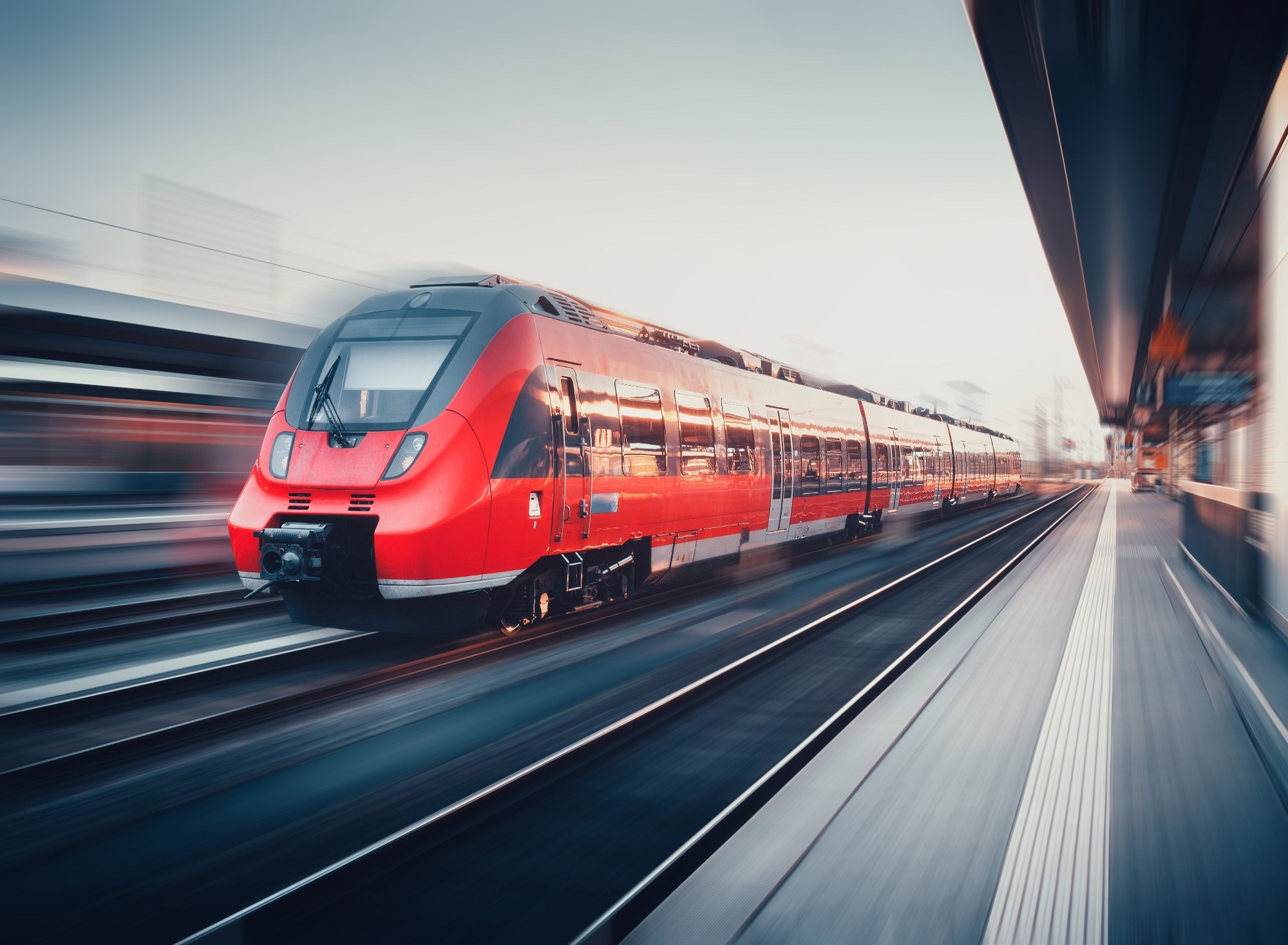In a paper published in the journal Vibration, researchers tackled railway safety and maintenance concerns by introducing efficient predictive tools for assessing critical speeds in numerous track sections within a railway corridor. They employed machine learning techniques, such as artificial neural networks (ANN) and support vector machines (SVM), for the first time in this context.
 Study: Advancing Railway Safety: Predicting Critical Speeds with AI Models. Image credit: Denis Belitsky/Shutterstock
Study: Advancing Railway Safety: Predicting Critical Speeds with AI Models. Image credit: Denis Belitsky/Shutterstock
A robust dataset, developed using advanced numerical methods and previously validated through experimentation, was created to support their research and is now accessible to other researchers. The results showcased the remarkable performance of these predictive models, offering a rapid and reliable means of predicting critical speeds across a wide range of track sections.
Background
The expansion and improvement of railway networks, often traversing soft soil formations and accommodating higher operating speeds, present new design challenges. One crucial aspect is assessing critical speed, where train speeds close to essential values lead to amplified track displacements, safety concerns, and increased maintenance costs. While theoretical foundations for critical speed assessment exist, practical computational demands, especially for numerous track sections, require innovative solutions.
Artificial Intelligence (AI) and Machine Learning (ML) are rapidly growing, and ML, a subset of AI, teaches machines to learn from data. Categorize it into supervised learning, which involves known input-output data, and unsupervised learning, which deals with unlabeled data. ANN mimics human neural connections, using layers with weights adjusted through backpropagation, but requires ample data and can overfit. SVM are versatile supervised algorithms that excel in high-dimensional spaces, establishing hyperplanes to classify data. ANN handles nonlinearity through layers and activation functions, while SVM uses kernel functions for linear separability. The choice between ANN and SVM depends on addressing nonlinear data.
Methodology and Database Creation
This section outlines the methodology for assessing critical speed and establishing a comprehensive database. The method's primary objective is calculating the necessary speed, which indicates the train speed causing significant track displacements, impacting safety and maintenance. Various numerical approaches are considered, including finite elements, finite differences, and more, applicable to both time and frequency domain analysis. The authors introduce an efficient 2.5D approach suitable for handling moving loads.
The subsequent part details the creation of the database, which is vital for training AI algorithms. Key parameters encompass track properties (e.g., Bending stiffness, thickness, and slab stiffness), embankment characteristics, and ground properties. The research explores various scenarios, encompassing factors such as the characteristics of both homogeneous and dispersive soils. It integrates these parameters and their effects on track-embankment-ground systems to create a comprehensive database of critical speed values. It serves as a crucial resource for training predictive AI models.
Proposed Method
The proposed methodology outlines the development of a prediction model for critical speeds of railway tracks. The process begins with an initial statistical analysis to understand the data's patterns. Univariate and multivariate analyses include statistical measures such as mean, mode, median, maximum, minimum, and interquartile range. Data normalization is applied to input variables for neural networks.
Two algorithms, ANN and SVM, are used for model implementation. The selection of input variables is crucial and involves six parameters related to the track, barrier, and ground properties. Neural networks undergo an iterative process to determine the optimal number of neurons and hidden layers.
To achieve a better model performance, SVM requires tuning hyperparameters like C and gamma. The training process involves utilizing both holdout and cross-validation approaches actively. Performance evaluation includes various metrics such as root mean squared error (RMSE), mean absolute error (MAE), mean square error (MSE), R-squared (R2), and standard deviation (STD) to assess the error associated with the training. The neural network's performance is studied further using k-fold cross-validation. The SVM model also shows high accuracy in predicting critical speeds.
Experimental Results
The study results actively validate the effectiveness of the trained SVM model in predicting critical speeds across various scenarios. Four new geotechnical scenarios are created, with varying input parameters falling within or outside the range of the initial database.
The SVM model accurately predicts the critical speed in these scenarios, demonstrating its ability to extrapolate beyond the training data. The research actively performs additional validation by employing 84 new geotechnical scenarios with various combinations of input parameters. The SVM model excels in predicting critical speeds for these scenarios, with a strong alignment between observed and predicted values, as indicated by low RMSE and MAE.
Sensitivity analyses are conducted for both the ANN and SVM models to identify the importance of input variables. The results highlight the variables that significantly influence the models. Identify the input variables with the most substantial impact in the case of SVM. A decision tree model is also employed to visualize the variable importance.
Conclusion
In summary, this study explores the use of innovative AI models, such as ANN and SVM, to predict critical railway track speeds on soft soils. The SVM model displayed superior accuracy, and sensitivity analyses emphasized the importance of variables related to the first soil layer. This approach offers a fast and efficient tool for critical speed prediction, benefiting both industry and academia. Furthermore, the research provides a valuable dataset for early-stage design and planning, simplifying the process for railway engineers and public authorities.